Have you ever been to Canal Street in New York City? Runs right by Chinatown in Manhattan. It’s on this street that the infamous vendors of counterfeit goods approach people walking by, with binders full of pictures of Louis Vuitton bags, Ray Ban sunglasses, and Rolex watches. This experience, portrayed in movies and TV shows for the benefit of people who have never been to NYC, is one that’s been seared into our cultural attitude towards Chinese goods. They’re cheap, low-quality knockoffs of better things.
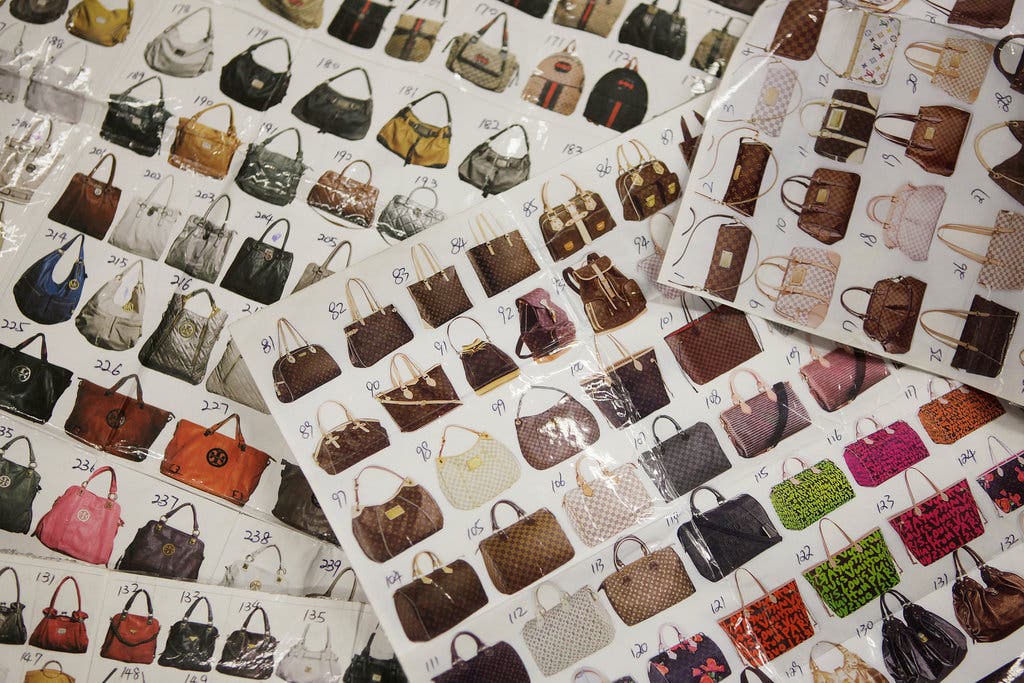
This is the enduring image that most people who aren’t into watches have of Chinese watches. For many of us who delve (some would say too greedily, and too deep) into this hobby, Chinese watch companies such as San Martin offer exceptional value for money, with features such as sapphire crystals and good case finishing available for much less than other brands held in higher esteem. These brands have proven that Chinese manufacturing is more than capable of producing excellent watches. However, most people turn to these brands as a way to get a cheaper homage to a watch they really want. It may not say “Rolex” or even “Seiko,” but the design language makes it clear where their inspiration came from.
There are, however, several brands out there that are doing their own thing, design-wise. On the less expensive side, you have Merkur, with watches starting at $99. Their watches are primarily inspired by mid-century Chinese designs. A little higher in the price bracket, you have legacy Chinese watch brands like Sea-Gull, Shanghai, and Beijing. You can find them on China Watch Shop, and like any brand, they run the gamut from really interesting, well-priced models to “this is the tackiest thing I’ve ever seen.” Going up in price, there are several microbrands, such as Maison Celadon, Ciga Designs, and the subject of this article, Atelier Wen.
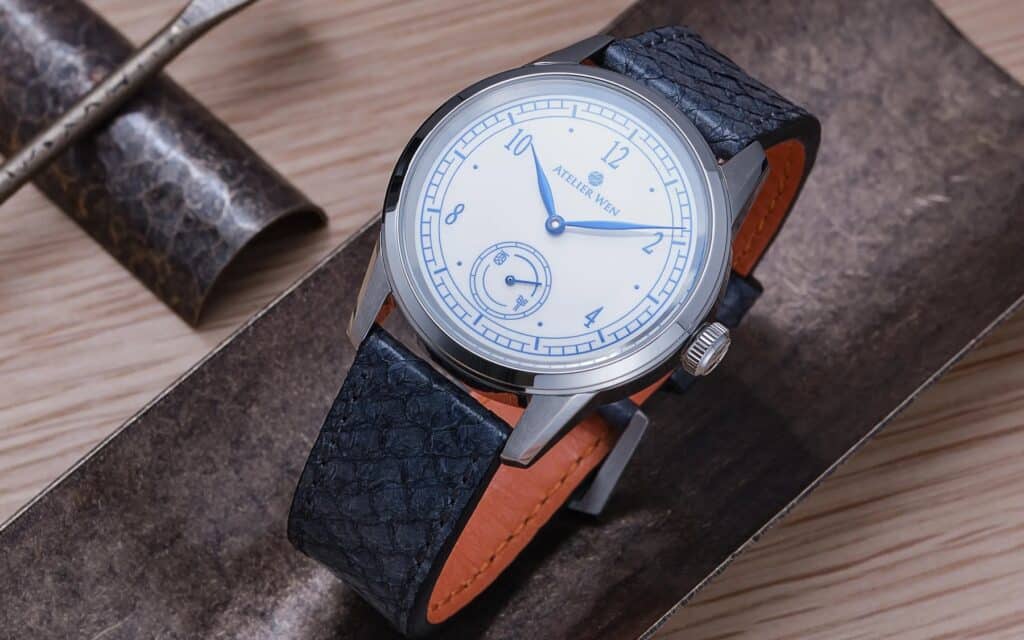
Atelier Wen first came on the scene in 2018 via Kickstarter, with its Odyssey and Hao models. Started by two Frenchmen, Robin Tallendier and Wilfried Buiron who met while studying abroad in China, and in collaboration with Chinese designers Li Ming Liang and Liu Yu Guan, they worked to develop a brand, and watches, that emphasized Chinese craftsmanship. These watches stood out due to their fantastic porcelain dials for around $500. With positive reviews for their first model, the team began designing their next watch, revealed in 2020 via their blog. Originally, the team intended to use a CNC guilloche machine to create the dials for the model. However, upon realizing that there was an artist in China who could create guilloche dials by hand, the team sought him out. I won’t go too much into the full story, as you can find it in many other reviews of this watch. I also recommend reading the brand’s blog, as it details many of the changes they made during the design and prototyping process. The end result is the Perception, a sports watch imbued with familiar characteristics, but with a distinct style of its own.
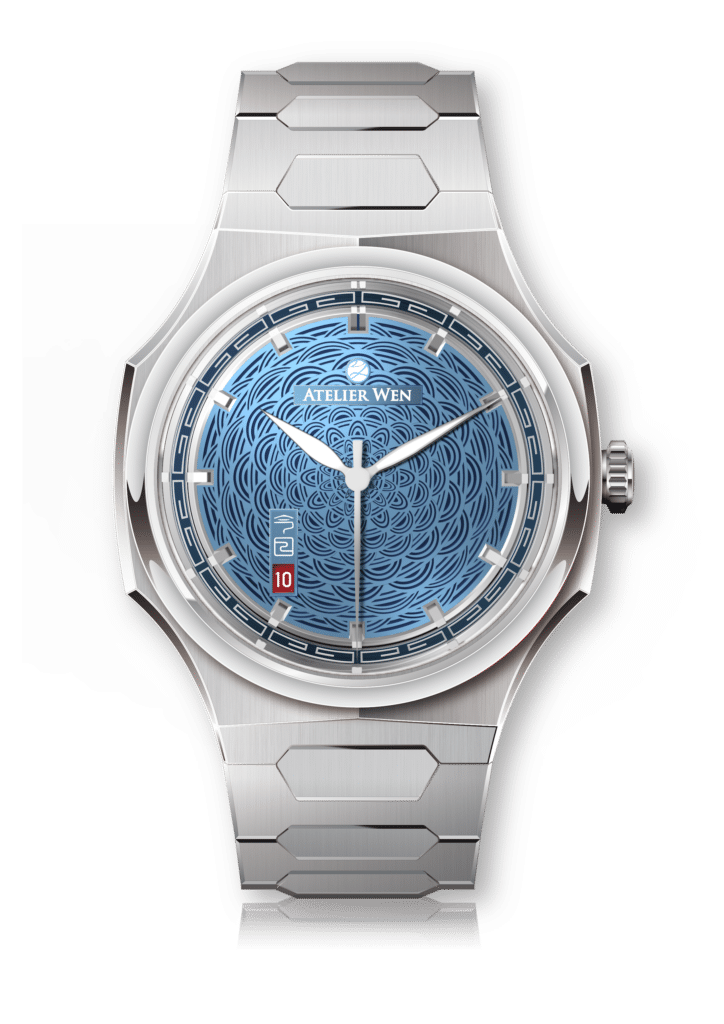
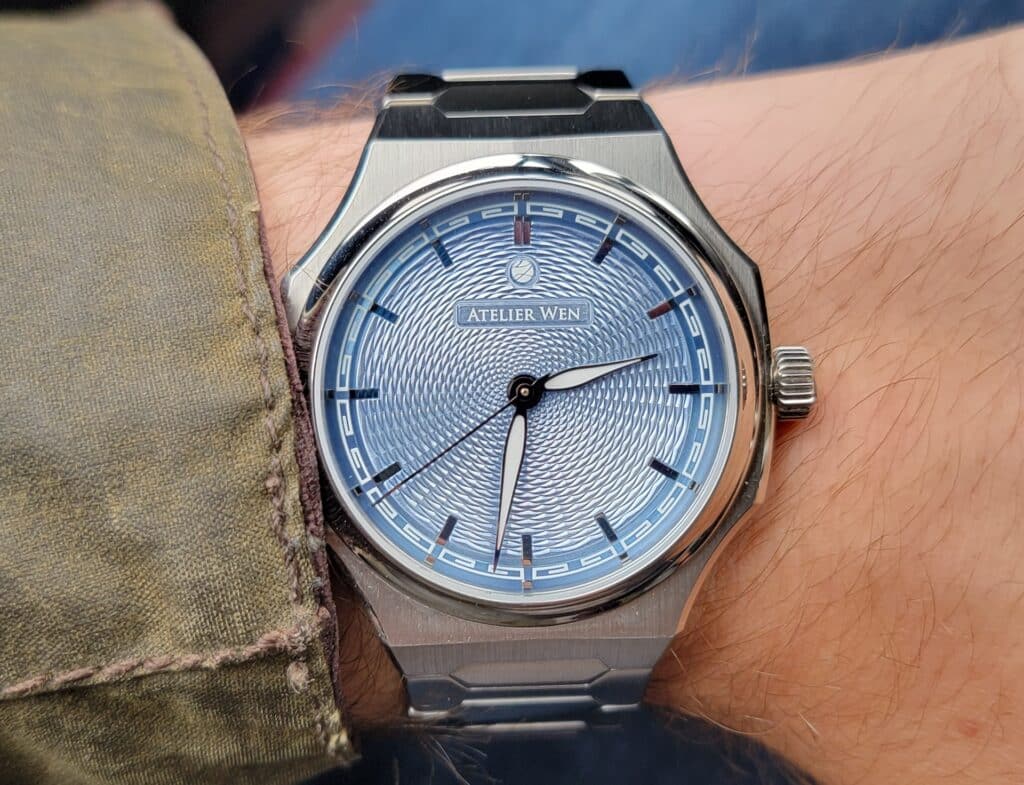
Let’s get a few things out of the way. Yes, this watch has a very familiar shape. It’s an integrated bracelet watch, whose case flares out on its sides, inviting comparisons to the Patek Philippe Nautilus. On a similar note, the bracelet looks like it’s based directly on the Vacheron Constantin 222. About the case, I disagree with critics claiming it’s just a copy; there are a lot of differences, looking at both side to side, that make it its own design. As for the bracelet—well, you got me there. I think it’s a pretty striking resemblance to the 222. However, I don’t think that’s necessarily a negative point. Nobody bats an eye when any number of microbrands, (or legacy brands, for that matter) use an Oyster-style, H-link, or any other manner of bracelet that may have been first used by another brand. It’s a good style that fits in well with the design of the rest of the watch.
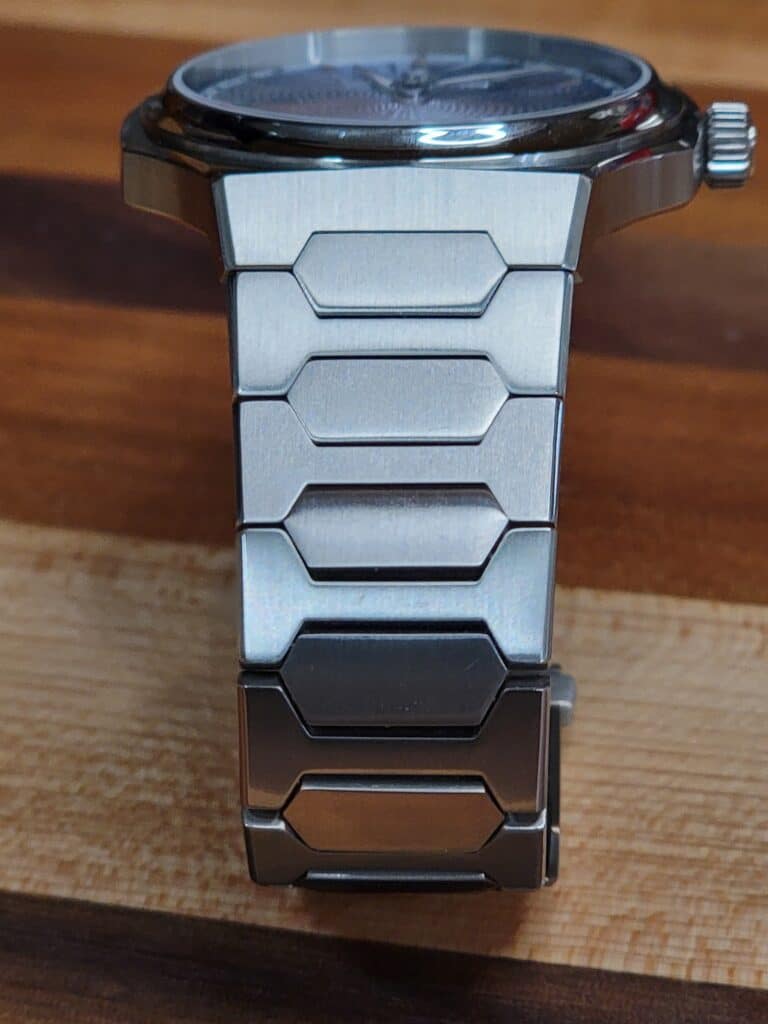
The model I have in for review is the first version that was delivered in 2022; as of early 2024, the brand has released a second version that has added additional details to the design. Regardless of the version, the watch is made of 904L steel, made famous by its use in Rolex watches. The case is 40mm in diameter, with an overall height of 9.4mm and a lug-to-lug length of 47mm. The caseback features a small display window through which you can see the balance spring, while ¾ of the space is taken up by an engraving of a stone lion, similar to one you would find in front of palaces and temples. The crown is signed and screws in, adding additional peace of mind to the watch’s 100m water resistance rating.
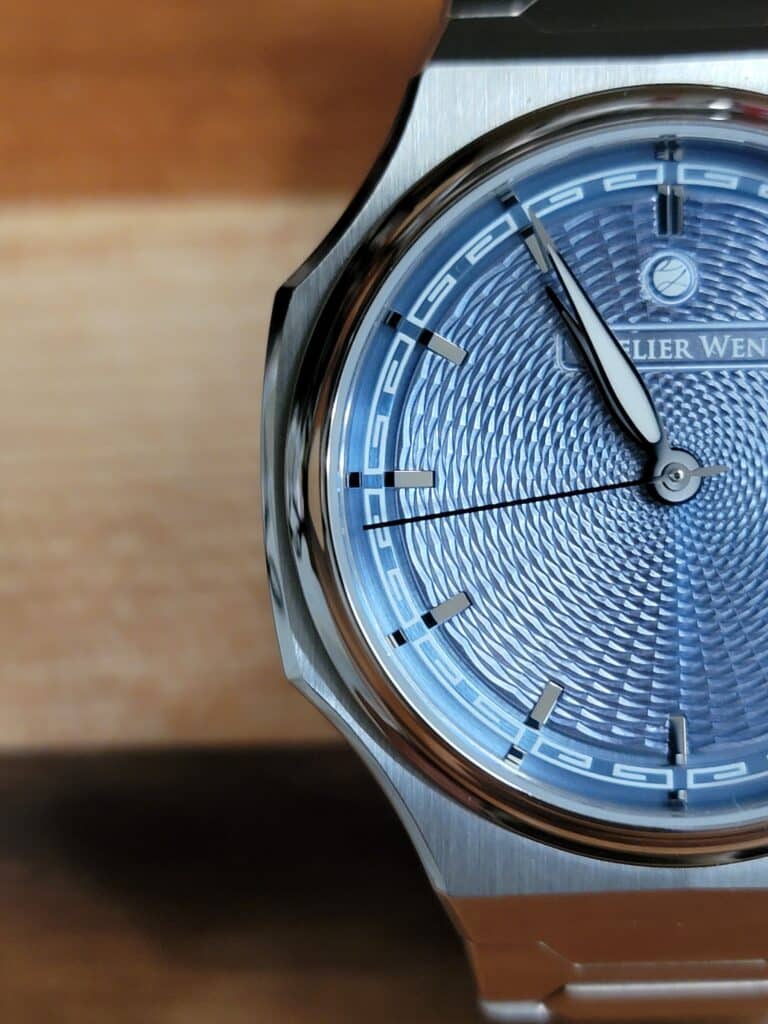
The bezel is highly polished, and the watch has a chamfered, polished edge that runs through the bracelet to the clasp. The Perception is comfortable to wear and looks excellent. I will say, however, that the design of the bracelet means that it does not drape down smoothly; the lug-to-lug ends up as something closer to 52mm across the wrist, though admittedly at a lower angle, meaning that it doesn’t sit flat across at that length. At the end of the bracelet, the clasp features a toolless micro-adjust feature. Just press and hold the logo on the clasp, and you can adjust the size of the bracelet; no need to even take it off your wrist. The brand also has FKM rubber straps for purchase, with an excellent deployant clasp with the brand’s logo.
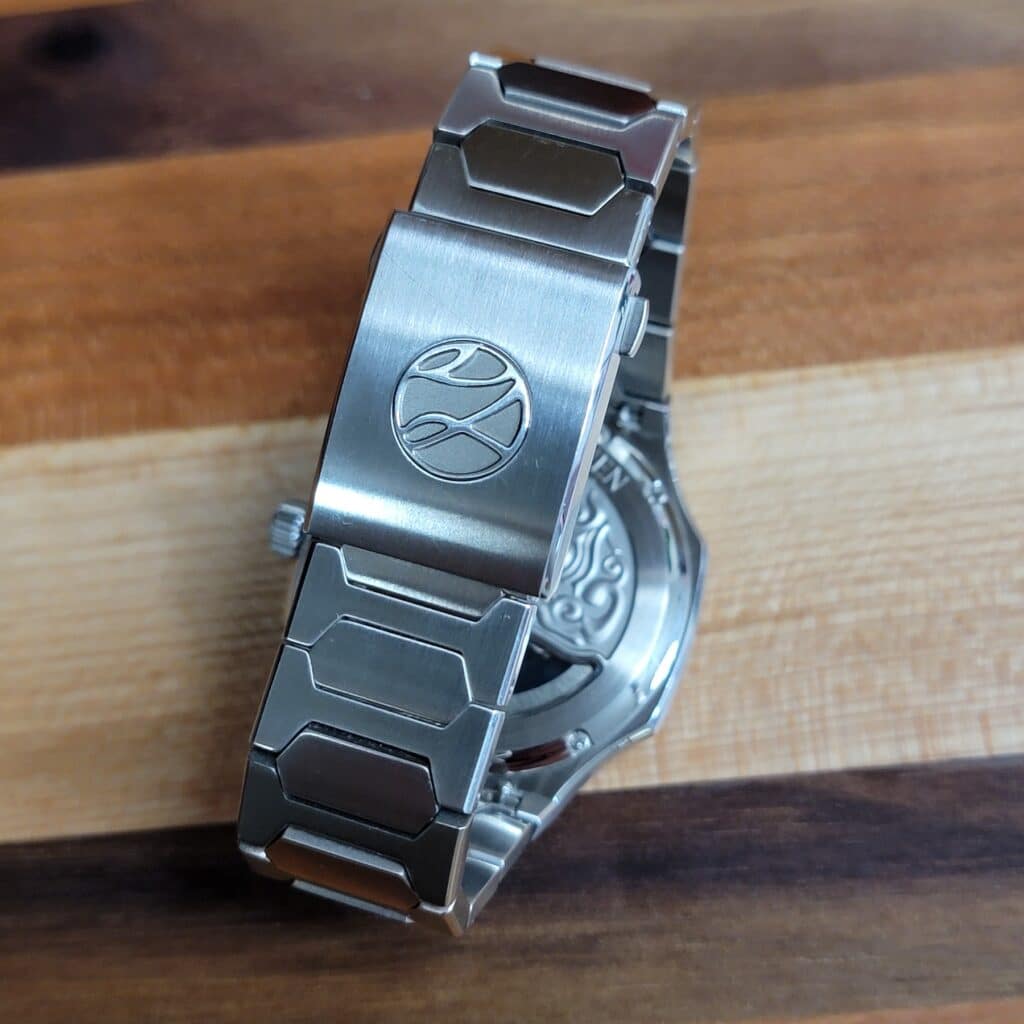
The dial color I chose is listed on the brand’s website as Piao (缥), translated as “mist,” and described as “an ethereal blue.” The model’s other standard colors are Ying (影) (meaning “shadow” and described as “elusive and intangible”) and Xia (霞) (meaning “daybreak,” and described as “a burning copper”). Glad to see that Grand Seiko doesn’t have the market cornered on poetic naming conventions! Interestingly, the dial is made of four distinct parts; the base plate, the indices, the minute track, and the guilloche pattern. The whole design of the watch is based on Chinese architecture. While the case is intended to be reminiscent of a Chinese pagoda, the dial follows a type of construction known as Sunmao (榫卯), in which no nails or glue hold anything in place; it’s all fit together by friction. The minute track also depicts a huiwen (回纹) pattern, which can be found in many forms of Chinese art.

I have mentioned very little about the watch’s main attraction, the dial, thus far because there are a dozen other reviews of this watch that focus their review entirely around it. I recommend you read them; the story of the guilloche master, Cheng Yu Cai, is an incredible one. Suffice it to say, you will not find a handmade guilloche dial at this price anywhere else. It is absolutely gorgeous. Have you ever heard the phrase “you really need to see it in person,” for watches that kind of come across a little “meh,” in press photos? Yeah, this isn’t that. Every photo I’ve ever seen of the Perception makes the watch look fantastic, and it’s somehow even better in person. I am consistently impressed with the amount of skill and effort it must take to develop each and every single dial.
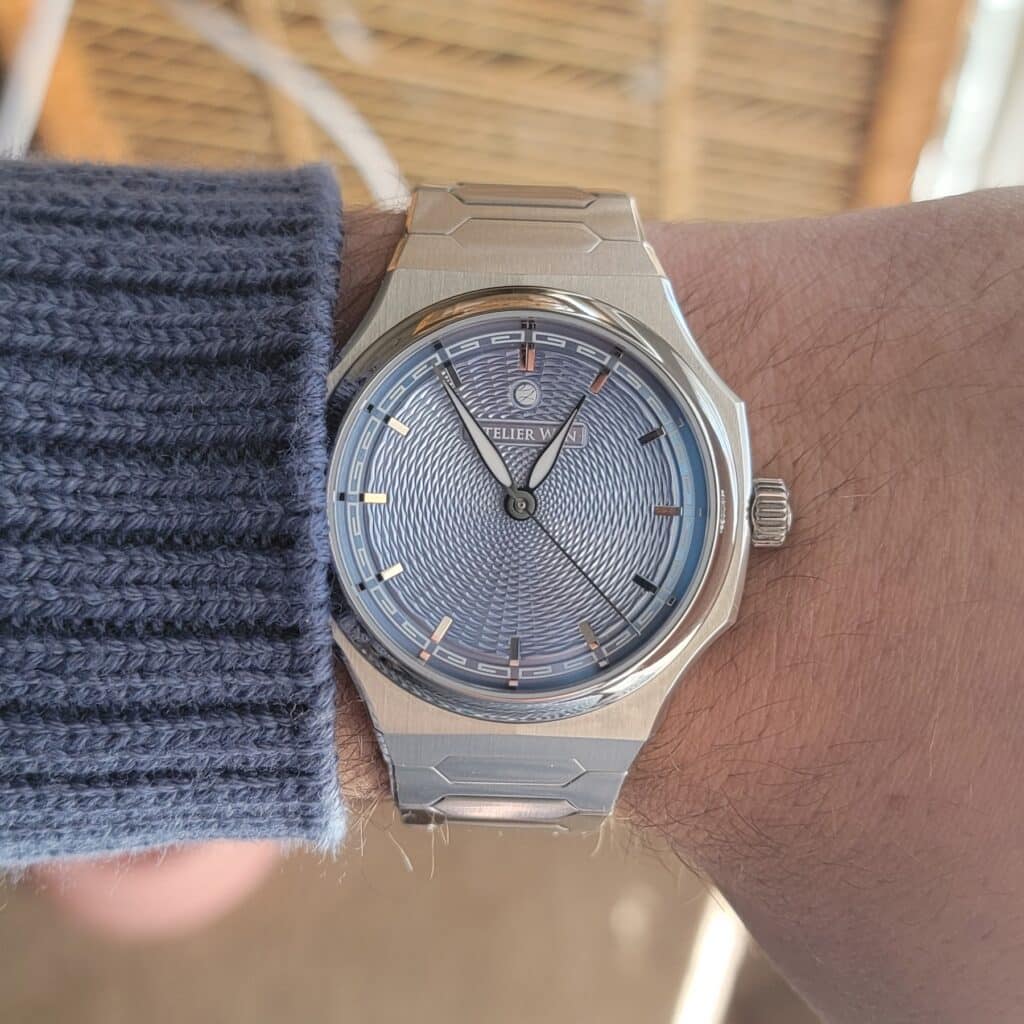
The watch is powered by a Dandong SL1588, modified specifically for Atelier Wen. Dandong (known also by the brand name Peacock) is a watch manufacturer that has existed in China for decades and produces higher-end movements than other legacy brands such as Seagull or Shanghai. It has 41 hours of power reserve and is accurate to +/- 10 seconds per day. There are two things, however, that I think would be important for Atelier Wen to consider for any models they make moving forward. One would be increased accuracy. In its price range, Swiss watches increasingly tout some kind of chronometer status. Secondly, the movement lacks a hacking feature. Do I really need these features? No. But then, did I need another watch? Also no. Part of the reason I like watches, though, is because they’re pieces of functional art. I think it would be really interesting to see Atelier Wen meet the same standards that a watch like the Zuanshi SM1A-K met in the ‘70s for accuracy, which made it “the most accurate watch in China” for almost ten years in a row.
Lastly, I want to discuss the price of this watch. When I purchased this, the preorder price was a little over $2,000 USD. The standard price was set at about $2,600. Given the recent upgrades the watch has received to the handset, the increased chamfers on the bracelet, a new telescoping clasp, and increased texturing on the case back, the price is currently over $3,200 USD. It is a testament to not only the technical features that Atelier Wen has packed into this model but also its enormous desirability. This makes obtaining one difficult, but not impossible. Batches of the Perception appear to be released once or twice a year. The website currently states that the next batch, which still has some allocations remaining, will be released next month. The next one will be in January 2025.
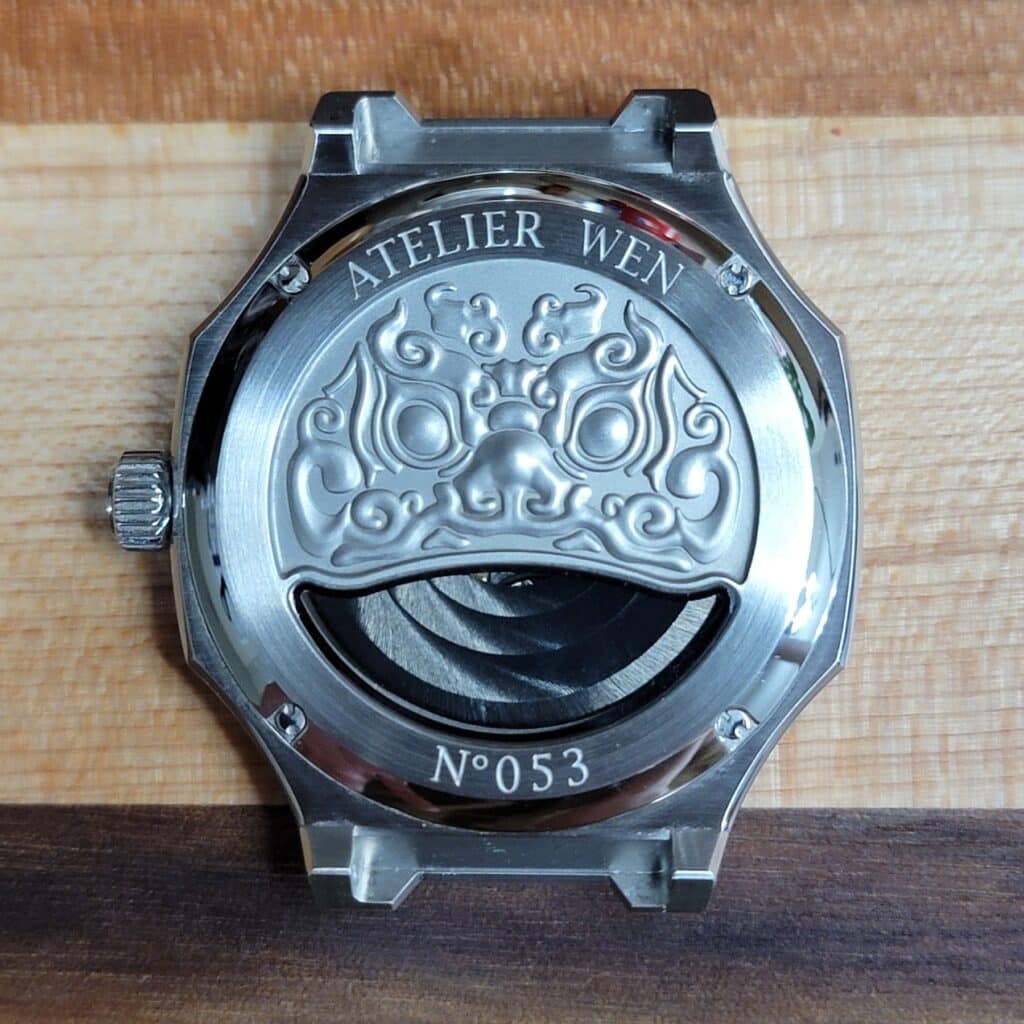
I started studying Chinese in 2019, around the same time I got into the hobby. I similarly researched Soviet watches, since I study Russian as well. Interestingly, there was far more information on Soviet watchmaking than Chinese watchmaking, so it was a little slower-going on Chinese research. Typing “Russian watches” into Google brought up not just brands, but whole articles on the history of watchmaking in the Soviet Union. Searching “Chinese watches” usually got me cheap knockoff watches on AliExpress, or if the algorithm was feeling generous, the websites for San Martin or Merkur. Once I found Atelier Wen, I followed the development of the Perception closely, as it was the most interesting example of a “modern” Chinese watch that I had seen thus far. I stayed up late the day the preorder window opened, determined to not miss out on an opportunity to both get a really cool watch (at a discount price, let’s be honest) and support a brand whose mission (promote Chinese watchmaking) I believe in. Given that they’ve consistently sold out each batch of watches they’ve produced for the last two years, I would say that they have found an under-tapped part of the watch market that is excited to see something like this finally come along.
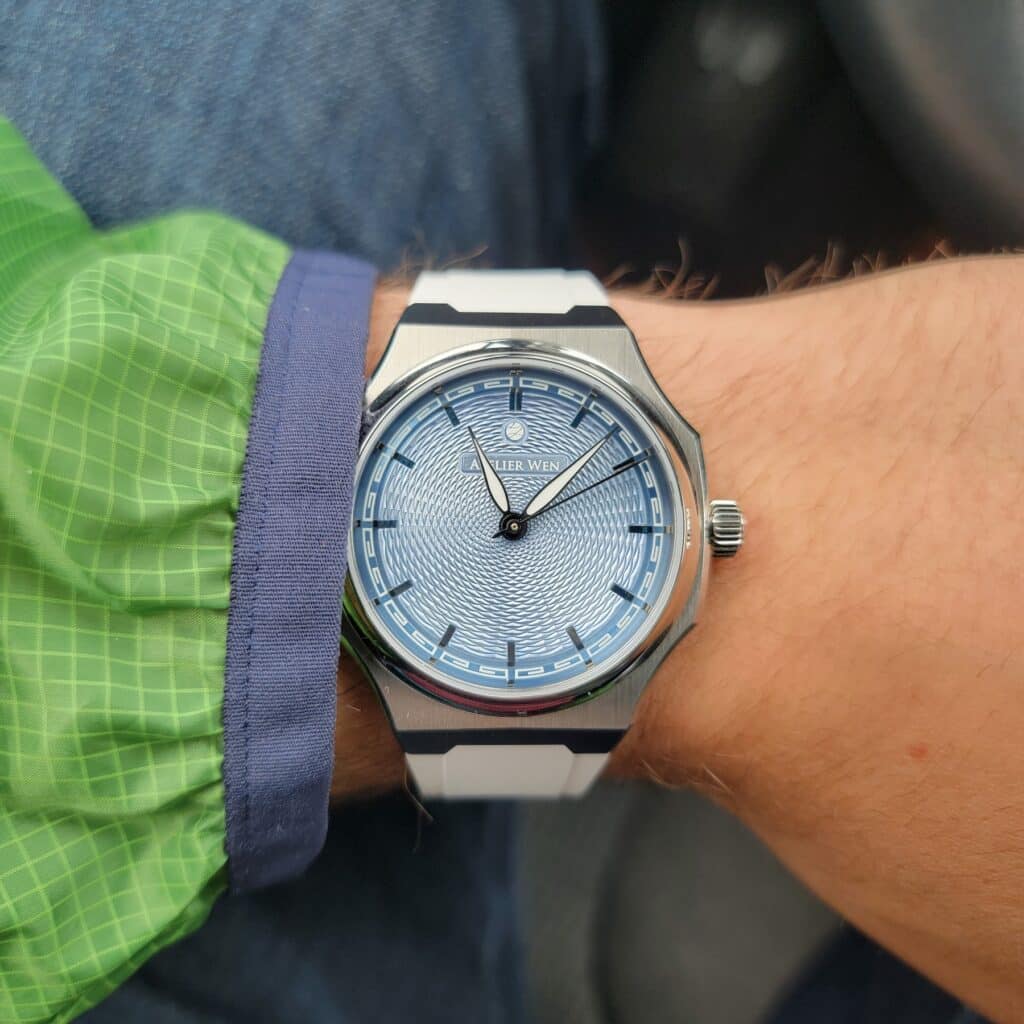
While there is always some risk in purchasing from a new brand, I believe that Atelier Wen has done a phenomenal job with the Perception. Every move they have made thus far indicates that they plan on being around for a long time. And if their next releases meet the same level of quality that they’ve demonstrated they’re capable of with the Perception, then I believe that they will be. To the (growing) team at Atelier Wen: 加油 !
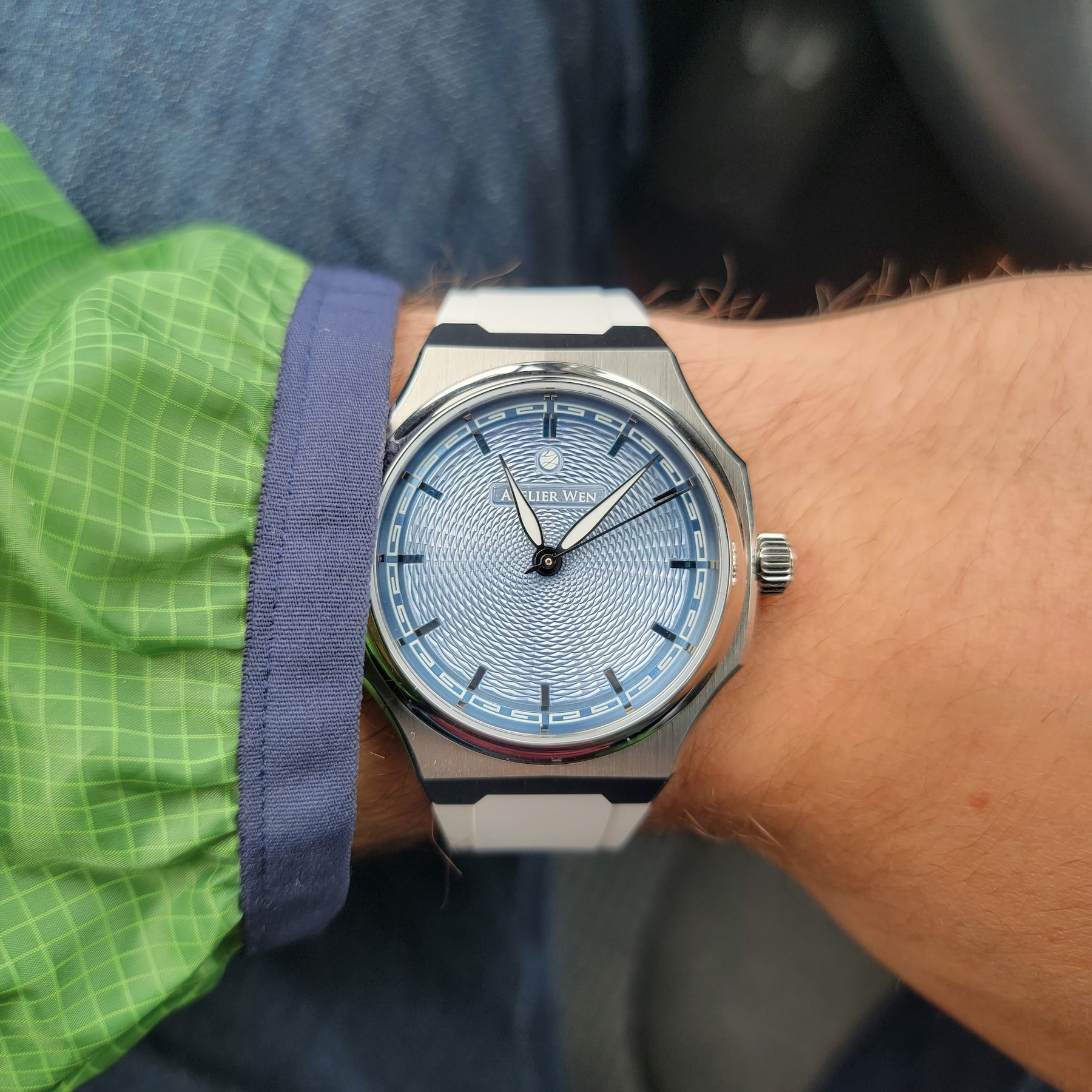
John began collecting watches in 2018, when he realized that the hobby meshed well with his love of studying history and researching obscure topics. In addition to watches, John enjoys collecting fountain pens, learning languages, reading, and traveling.
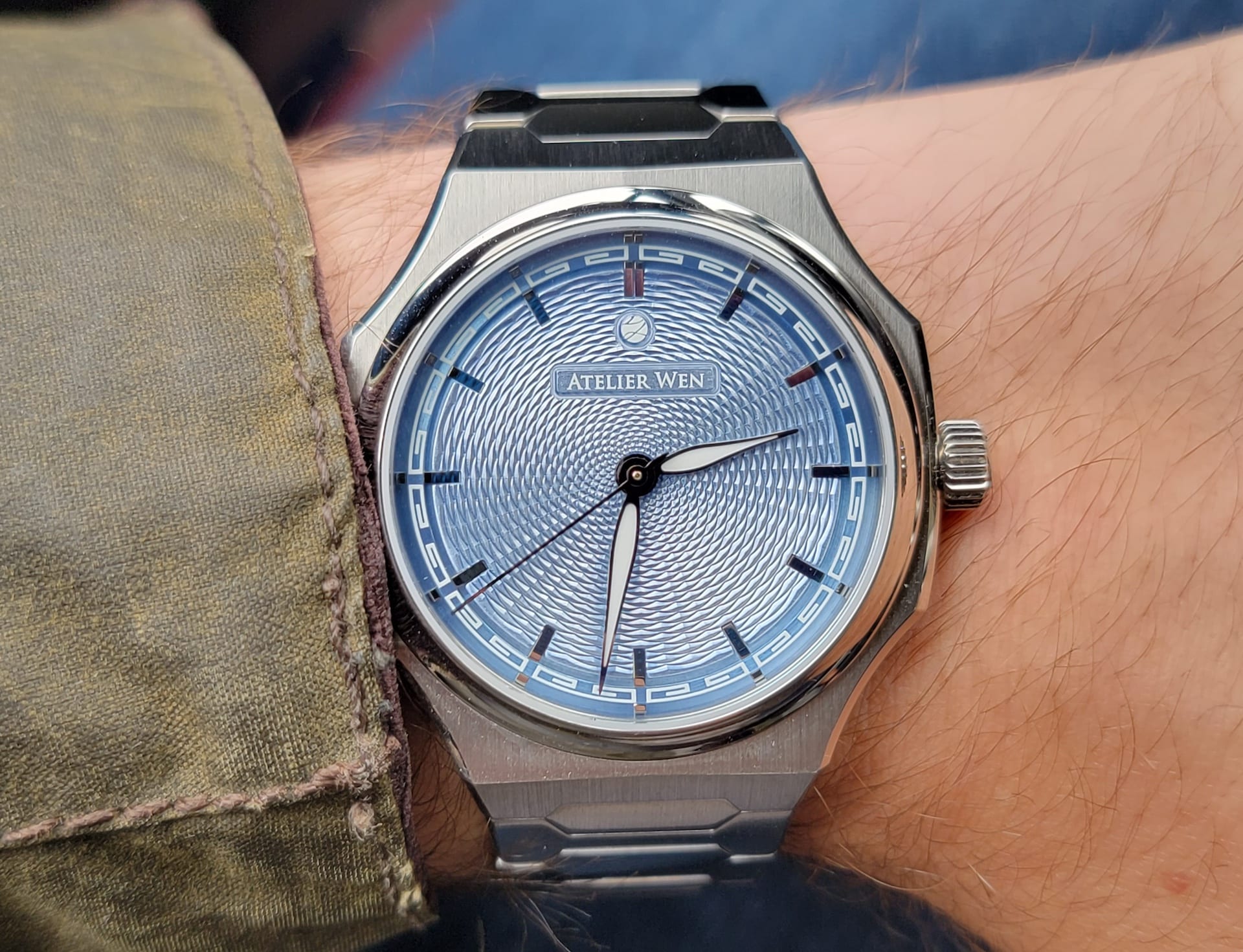
I can only agree with most information. Dial is simply beautiful and depending on light sourse is changing color shade permamnently.
There is one negative thing. Movement keeps accuracy +/-10s only in horizontal position without any changes of wrist position. in vertical position accuracy drops to +/- 25 seconds, what is not very satisfying, comparing to Atelier Wen promises.